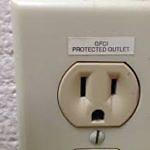How GFCI’s Works
Posted on: January 26, 2017
By: Alan O'Neill
Posted in: Electrician
How GFCI’s Works For Houston Homeowners
A ground fault circuit interrupter (GFCI) can help prevent electrocution. If a person’s body starts to receive a shock, the GFCI senses this and cuts off the power before he/she can get injured. GFCIs are generally installed where electrical circuits may accidentally come into contact with water.
A short video which explains how life saving GFCI’s(Ground Fault Circuit Interrupters) operate.
How GFCIs Work
You may know in what situations the NEC requires you to install a ground-fault circuit interrupter (GFCI), but do you know how it works? A GFCI is specifically designed to protect people against electric shock from an electrical system, and it monitors the imbalance of current between the ungrounded (hot) and grounded (neutral) conductor of a given circuit. Don’t let the name confuse you — these devices will operate on a circuit that does not have an equipment-grounding conductor.
With the exception of small amounts of leakage, the current returning to the power supply in a typical 2-wire circuit will be equal to the current leaving the power supply. If the difference between the current leaving and returning through the current transformer of the GFCI exceeds 5mA, the solid-state circuitry opens the switching contacts and de-energizes the circuit.
However, a GFCI doesn’t give you a license to be careless. Severe electric shock or death can occur if you touch the hot and neutral conductors in a GFCI-protected circuit at the same time because the current transformer within the protection device won’t sense an imbalance between the departing and returning current and the switching contacts will remain closed.
GFCIs will also fail if you wire them improperly. The most important thing to remember when wiring them is to connect the wire originating at the breaker to the line side of the GFCI and the wire connecting downstream to the load side of the device. The GFCI terminals are clearly marked “Line” and “Load.” As an added safety improvement, one manufacturer markets a 15A, 125V receptacle with a built-in line-load reversal feature that prevents the GFCI from resetting if the installer mistakenly reverses the load and line connections.
One final thought on GFCI protection
Press the test button of the protection device to ensure it turns off the power to the connected load. You should do this whenever you install one, but also before relying on it to protect you when using it. Do not assume a GFCI protection device is operational unless you properly test it! Call us (713) 812-7070 for your home service and repair needs.
For more related articles and info visit Blog.
